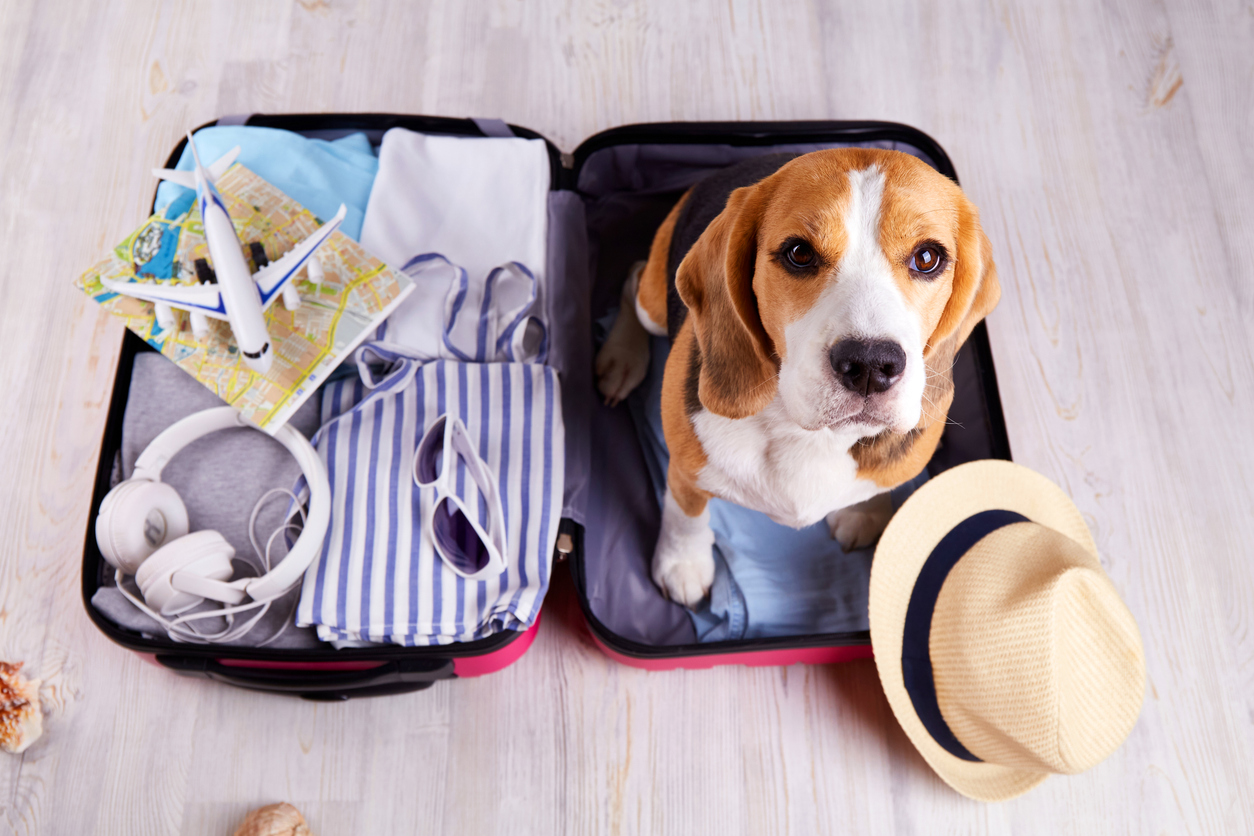
Traveling with your furry companion can turn an ordinary trip into a truly memorable adventure—but it also comes with unique challenges. From airline policies and car safety to pet-friendly accommodations and calming techniques, there’s a lot to consider when planning a pet-inclusive getaway. Whether you’re hitting the road with your dog, flying with your cat, or simply bringing your pet along for a weekend visit, this guide offers practical tips to ensure a safe, comfortable, and stress-free trip for both of you.
1. Know Your Pet’s Travel Personality
Before planning any trip, assess whether your pet is suited for travel.
Ask yourself:
- Does your pet get anxious in new environments?
- Is your pet comfortable in a carrier or car for long periods?
- Has your pet traveled before? If not, how do they handle short car rides?
Pro tip:
Do a few trial runs—like short car trips or visits to a friend’s house—to gauge how your pet reacts before taking on a longer journey.
2. Visit the Vet First
A pre-trip vet visit is essential.
Checklist:
- Ensure your pet is up to date on vaccinations.
- Request a copy of your pet’s medical records and health certificate (especially for air travel).
- Discuss motion sickness, anxiety meds, or calming aids if needed.
- Microchip your pet or make sure ID tags are updated.
Note:
Some destinations—especially international ones—have specific health requirements or quarantine rules for pets.
3. Choose the Right Mode of Transportation
By Car:
- Use a pet seatbelt, crate, or carrier to keep your pet secure.
- Never let pets ride with their head out the window or roam freely—it’s dangerous for both of you.
- Take breaks every 2–3 hours for bathroom and water.
- Don’t leave pets alone in the car, especially in warm weather.
By Plane:
- Check the airline’s pet policy well in advance—fees, size limits, and carrier types vary.
- Small pets may fly in-cabin in an airline-approved carrier.
- Larger pets often fly in the cargo hold—check temperature and safety guidelines.
- Avoid flying during extreme weather.
Pro tip:
Book direct flights to reduce travel time and stress.
By Train or Bus:
- Rules vary by company—Amtrak allows small pets on certain routes.
- Check size and crate requirements before booking.
4. Pack a Pet Travel Kit
Be prepared for anything with a well-stocked kit:
- Food and treats
- Collapsible food and water bowls
- Waste bags, litter, and scooper
- Medications and supplements
- Leash and harness
- Favorite toy or blanket (for comfort)
- Towel and wipes
- First-aid kit for pets
- Copies of vaccination records
Pro tip:
Pack a few extra meals and supplies in case of delays or emergencies.
5. Book Pet-Friendly Accommodations
Not all hotels or rentals welcome pets—so don’t assume.
Tips for finding the right stay:
- Use pet-specific filters on platforms like Airbnb, Booking.com, or BringFido.
- Call ahead to confirm pet policies, fees, and any breed or size restrictions.
- Ask if there are nearby parks, walking areas, or pet-friendly restaurants.
Etiquette reminder:
Always clean up after your pet and keep them leashed in common areas.
6. Keep Your Pet Calm During Travel
Travel can be stressful—especially for pets not used to new environments or long trips.
Calming strategies:
- Use calming sprays or pheromone diffusers.
- Play soft music or bring a familiar toy or blanket.
- Try anxiety vests or wraps for dogs.
- Exercise your pet before the trip to help reduce restlessness.
Talk to your vet about anti-anxiety medication if your pet is especially nervous.
7. Stick to Your Routine (As Much as Possible)
Pets thrive on routine, so keep feeding, walks, and sleep schedules consistent.
Tips:
- Bring your pet’s usual food to avoid digestive issues.
- Maintain regular potty breaks and playtime.
- If staying in one place for a while, create a “home base” space for your pet to relax.
8. Know the Local Laws and Pet Rules
Every destination has its own regulations regarding pets in public spaces.
- Check leash laws and dog park rules.
- Know pet transport laws (especially for rideshares, taxis, or public transit).
- Avoid areas where pets are restricted (like certain beaches or nature reserves).
Pro tip:
Research emergency vets or 24-hour animal hospitals in your destination before you arrive.
9. Prioritize Identification and Safety
Even the best-behaved pets can get lost in unfamiliar surroundings.
Ensure your pet has:
- A secure collar with an ID tag
- A microchip with up-to-date info
- A GPS pet tracker (optional but helpful for outdoor adventures)
Take recent photos of your pet in case you need to share a lost pet alert.
10. Enjoy the Experience Together
Traveling with your pet is more than logistics—it’s about bonding and creating memories. Whether it’s a hike in the mountains, a beach stroll at sunset, or a cozy staycation, your pet will appreciate the adventure as much as you do.
Capture the moment:
Take plenty of photos, explore together, and embrace the unexpected. After all, the best part of traveling with pets is seeing the world through their curious, joyful eyes.
Traveling with pets doesn’t have to be stressful—it just takes preparation, patience, and a bit of planning. By thinking ahead and considering your pet’s comfort and safety at every stage, you’ll set the stage for a smooth, enjoyable trip. Whether you’re traveling by car, air, or train, these tips will help ensure that your next journey is a positive experience for both you and your four-legged companion. Happy travels—and don’t forget the treats!







